
 |
|
||||||||||||||||||||||||
|
Alaska's Heritage
CHAPTER 4-20: EDUCATION
Education is overlooked in the new territory With the exception of the school conducted by the Russian Orthodox church at Sitka, the Russians closed the schools they had operated in Alaska when they left in 1867. The American government made no provisions for education in the new territory until 1870. When the residents of Sitka formed a civil government in 1868, they purchased a building for a school and hired a teacher. The Sitka economy declined later that year and the monthly salary of the teacher was reduced from $75 a month to $20. The teacher resigned and the school closed. A few private schools for non-Native children operated for brief periods at Sitka during the 1870s. In 1880, Sitka had two public schools, one for Natives and one for non-Natives. 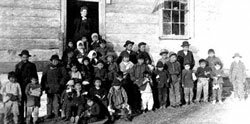 Public school No. 2 at Sitka 1880 Collection Name: Alaska Historical Library, Edward DeGroff Collection. Identifier: PCA 91-48 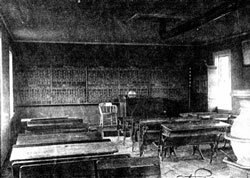 School room at St. Paul, Pribilof Islands. Collection Name: Alaska Historical Library, U.S. Fish and Wildlife Service Collection. 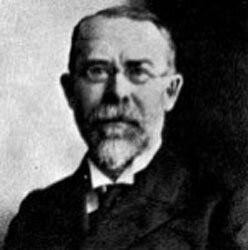 Sheldon Jackson was appointed General Agent for Education in 1884and held the position until 1908. Although there was controversy over his methods, Jackson stretched insufficient funds for education in the territory by working agreements with various rel Collection Name: Alaska Historical Library. Identifier: PCA 45-346 An agent for education is appointed The Organic Act, passed by Congress in 1884, directed the Secretary of the Interior to provide education for children in Alaska without regard to race. The provision was unusual for the time. Additionally, Congress authorized $25,000 for education in Alaska. The secretary chose to appoint a general agent to oversee the opening and operation of schools around the district. Sheldon Jackson, a Presbyterian leader who was interested in Alaska, was appointed to the position and served until 1908. Although Congress increased the appropriation for education in Alaska to $40,000 in 1885, the funds were not adequate to accomplish the task assigned in so vast a territory. During the next 10 years, Jackson appealed to various Protestant churches to open missions and schools around Alaska. He suggested a different area of Alaska to each group to cover the territory. A number of church missionary societies responded to Jackson's appeal. Among them the Moravians opened a school at Bethel, the Episcopalians opened a school at Tanana, the Presbyterians opened a school at Barrow, and the Society of Friends opened a school at Kotzebue. Under this plan, a number of schools opened and Jackson stretched the funds authorized by Congress. The teachers at Alaska schools received salaries of $800 a year. The salaries were much less than teachers were paid in Washington or Oregon. 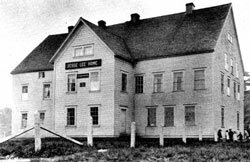 Methodist missionary Agnes Soule housed children in her home at Unalaska for over 10 years before raising the funds to build an orphanage. In 1898, she married a physician, Dr. Albert Newhall. The couple build and operated the Jesse Lee Home at Unalaska Collection Name: Alaska Historical Library, C.L. Andrews Collection. Identifier: PCA 45-346 A vocational training school opens at Sitka 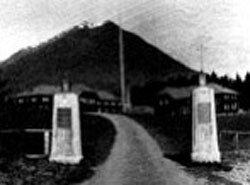 The Sitka Industrial Training School that Presbyterian missionary John G. Brady opened in Sheldon Jackson School in honor of the Presbyterian missionary and Alaska's first general agent for education. Collection Name: Alaska Historical Library, D.E. Sheriff Collection. Identifier: PCA 60-1174 During the 1910s and 1920s, other vocational boarding schools for Alaska Natives opened around Alaska. One, at White Mountain on the Seward Peninsula, opened in 1926. Students between the ages of 14 and 21 attended the school. The school operated for about ten years and again for a few years after World War II. Mining towns open schools In many gold rush boom towns, schools opened during the winter. Circle City had a school in 1898. The Bureau of Education supplied the teacher, Anna Fulcomer, and the fuel. Circle City residents furnished the school building and furniture. After the boom days, most of these mining town schools closed. The children whose families remained were tutored at home. Revising the Organic Act of 1884, Congress passed legislation in 1900 providing for the incorporation of towns in Alaska. The legislation allowed local control of the schools and financing of operations through local funds. In 1905, Congress passed the Nelson Act. It provided for the education of "white children and children of mixed blood who lead a civilized life" in those parts of the territory outside incorporated towns. The federal Bureau of Education was placed in charge of this program. Several school systems operate By 1912, incorporated towns supported schools for non-Natives, the Bureau of Education operated schools for non-Natives who lived outside of incorporated towns and for Natives, and a number of missionary groups continued to operate boarding and day schools for Natives. In the majority of these schools, one teacher taught students from first through eighth grades. Schools in incorporated towns operated at Eagle, Fairbanks, Valdez, Nome, Juneau, Ketchikan, Skagway, Douglas, and Wrangell. The next year, the first territorial legislature decided it would establish schools for "white children and children of mixed blood who live a civilized life." The legislature also passed a law requiring children to attend school. Funding for Alaska's education system involved federal, territorial, and local governments. The federal government contributed 25 per cent of the license fees that were paid into the Alaska Fund. Revenue from the sale of timber from Alaska's national forests was for education and roads. The territory contributed a portion of the funds it collected from fisheries, cold storage plants, and license fees. Additionally, every male resident between the ages of 21 and 40 was assessed five dollars annually for school support. Local governments contributed funds they collected from license fees and real and personal property taxes. In 1915, a Territorial Board of Education, composed of the governor and four senators, one from each judicial division, was created. They became responsible for the education of non-Natives in Alaska. The board appointed the first territorial commissioner of education, Lester D. Henderson, in 1917. Henderson organized a two-week annual teachers institute that was held from 1917 to 1925. The second year of the institute the teachers formed the Alaska Education Association. In 1930, the organization affiliated with the National Education Association. In 1933, the Territorial Board of Education was reorganized. A member from each judicial division and one member at-large were appointed to six-year terms by the governor with the consent of the legislature. Most teachers were women. The standard contracts included the phrase "marriage annuls this contract," although many women continued teaching after they were married. Orah Dee Clark was one of Alaska's many dedicated teachers. In 1906, Clark began her 50-year-long Alaska teaching career at Kodiak. Clark organized the first school at Anchorage in 1915. Later, she helped establish schools along the Alaska Railroad between Anchorage and Wasilla. Before she retired, Clark had taught from the Arctic to the Aleutian Islands. The Bureau of Education encouraged Alaska Native women to become teachers. A few did, some of whom returned to Alaska to teach. Katherine Dyakanoff Seller was one. Seller, an Aleut, attended Carlisle Indian School in Pennsylvania and then a teacher's college in the east. In 1909, she returned to Alaska as an assistant teacher at Sitka. Seller's next teaching assignments were at Atka where she taught for four years, and Alitak on Kodiak Island where she taught for six years. While at Atka, she married and had three children. In 1920, Seller became the superintendent of the Native reservation at Tyonek. Education alters the traditional Native lifestyle Native students at territorial, Bureau of Education, or mission schools were introduced to the American way of life. They were required to speak English. The curricula were patterned after schools in other areas of the United States. Reading, composition, handwriting, mathematics, and civics (American government and customs) were standard courses. The school year began in September and ended in May. The requirement to attend school disrupted many Natives' traditional subsistence cycle. Children were not free to move to spring or fall hunting camps. Episcopalian Archbishop Hudson Stuck thought that although reading and writing had value, children should also learn how to make a living and care for themselves in the area where they lived. These skills could best be taught by their relatives. A number of children were sent to boarding schools far from home. Those sent to Indian schools in Pennsylvania or Oklahoma were not sent home during the summer recess. For some, this meant they did not return home for more than four years. Education in rural areas of Alaska presents new challenges In 1931, the Bureau of Indian Affairs took over the operation of rural schools from the Bureau of Education. Alaska's program was combined with the other programs to educate American Indians. In late 1984, the Bureau of Indian Affairs was turning over most of its responsibilities for educating Alaska Natives to the State of Alaska. The Bureau of Indian Affairs opened vocational boarding schools at Eklutna, Kanatak, and Wrangell for Alaska Natives. Fire destroyed the Kanatak School in the Bristol Bay area shortly after it opened. The Eklutna school closed and a school opened at Seward after World War II. A boarding school at Mount Edgecumbe, near Sitka, opened in 1947. The first year nearly 500 students enrolled. Courses offered including fishing, agriculture, boat building, carpentry, engine maintenance, radio operation, nursing, clerical training, and academic courses for future teachers. The Wrangell Institute became a boarding institute for orphaned Native children of elementary school age. The State of Alaska opened several regional high schools for rural students. One was Beltz High School at Nome. The drop-out rate was very high. Students missed their families, friends, and familiar environment. Villagers missed having people of high school age in the community. In 1972, Alaska Legal Services sued the State of Alaska on behalf of Molly Hootch. Molly, a high school student from the Western Alaska village of Emmonak, attended school in Anchorage. The suit charged that boarding schools and correspondence courses did not provide the same educational opportunities as attending high school in the student's hole community. In 1976, the State of Alaska agreed with Alaska Legal Services that villages that had an elementary school should have high schools. The State of Alaska immediately began a $143 million program to construct schools in compliance with the consent decree. Eight years later, statistics showed the effort worthwhile. High school graduation rates of students from small Alaskan communities tripled. The student drop-out rate fell dramatically. Young people stayed at home. Some rural high school students still chose to attend other schools. Mount Edgecumbe boarding school continued to have high enrollments until it closed in 1984. Alaska's education system continues to grow The decade between 1950 and 1960 was one of tremendous growth in Alaska's public school enrollments. The average daily attendance of local school districts increased from 8,671 in 1949-1950 to 25,283 in 1959-1960. During that same period, enrollment at rural schools run by the Department of Education increased from 2,073 to 11,772. The overall enrollment increase was 352 per cent. The federal Johnson-O'Malley Act provided some funding for the territory to deal with the dramatic increase in numbers of students. The federal government gave the territory funds to operate Bureau of Indian Affairs schools until the facilities were improved to meet territorial standards. At that time, the schools would be transferred to the territory to operate. During the 1983-1984 school year, 96,381 students attended Alaska's 452 public elementary and secondary schools. The schools were administered by 32 city and borough school districts and 21 regional school district for areas outside organized boroughs. Not included in these statistics were 19 schools operated by the Bureau of Indian Affairs and 69 schools operated by private groups. Of the total number of schools, 161 were small high schools with less than 100 students that were in communities with populations under 1,000. A small number of students learned at home under a correspondence study program operated by the State of Alaska. Post-secondary education develops The Territory of Alaska took advantage of the Morrill Land Grant Act's provisions for higher education. The act, passed by Congress in 1862, gave states and territories land for the purpose of supporting post-secondary institutions. Such institutions were to include instruction in technical subjects such as engineering and agricultural sciences. In 1922, the Alaska Agricultural College and School of Mines opened. It was located six miles northwest of Fairbanks. Judge Charles E. Bunnell became the first president. The first year 13 students enrolled. The faculty helped develop better methods of farming and mineral exploration and recovery. In 1935, the institution became the University of Alaska. Residents were not charged tuition and non-residents paid $20 per semester. By the 1940s, the university offered four-year degree programs in agriculture, arts and letters, business administration, chemistry, civil engineering, education, general science, home economics, mining engineering, and pre-medicine. A five-year program in engineering was also available. The Territorial Legislature passed legislation creating a community college system in 1953. Ten community colleges have opened. The University of Alaska added campuses at Anchorage and Juneau. In 1960, a private four-year liberal arts college, Alaska Methodist University (now Alaska Pacific University) opened in Anchorage. The industrial training school at Sitka became a junior college. As the population of Alaska grew and the costs to attend college increased, more students attended Alaskan post-secondary institutions. In 1984, over 32,000 full-time students attended Alaskan colleges.
|
|||||||||||||||||
|